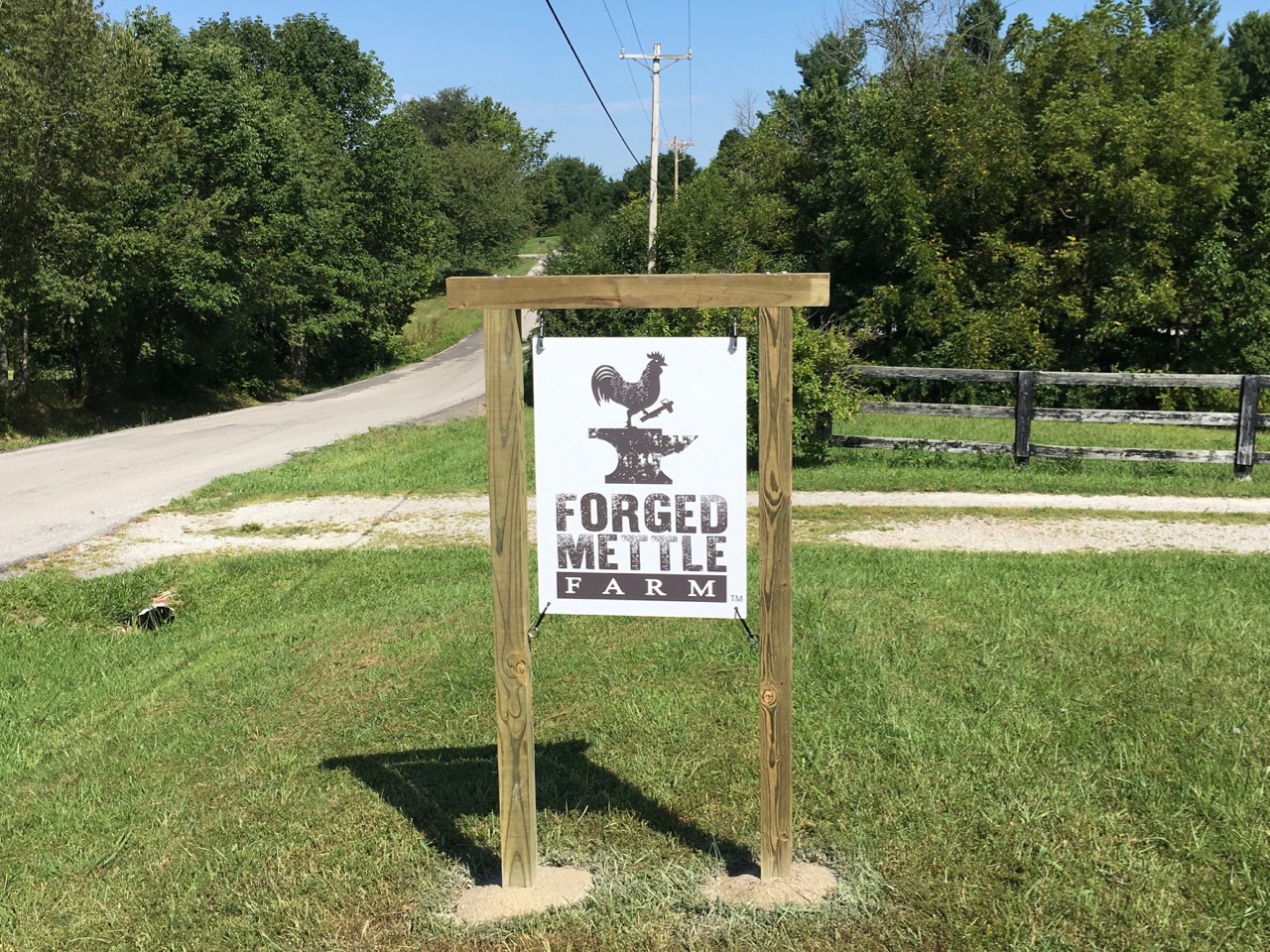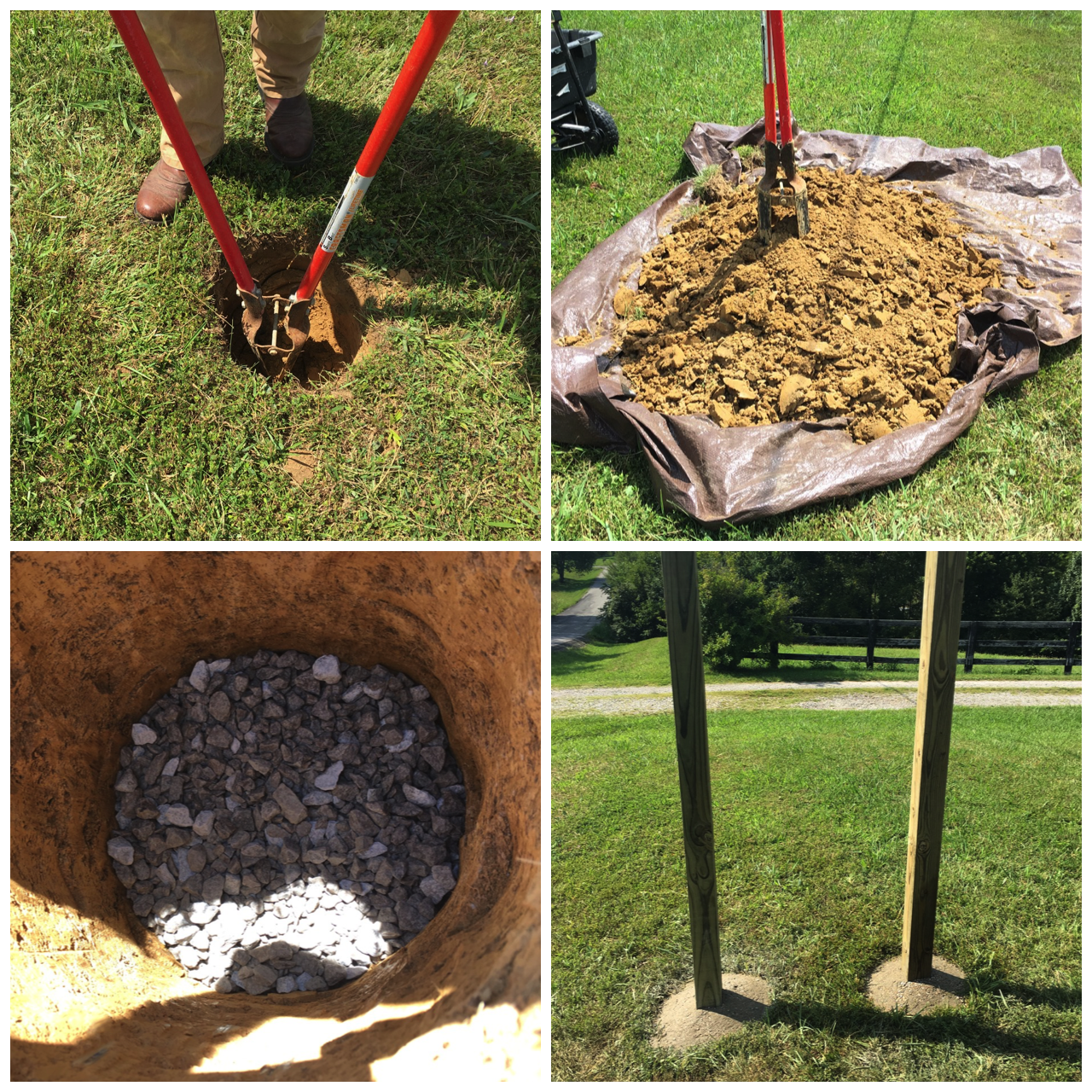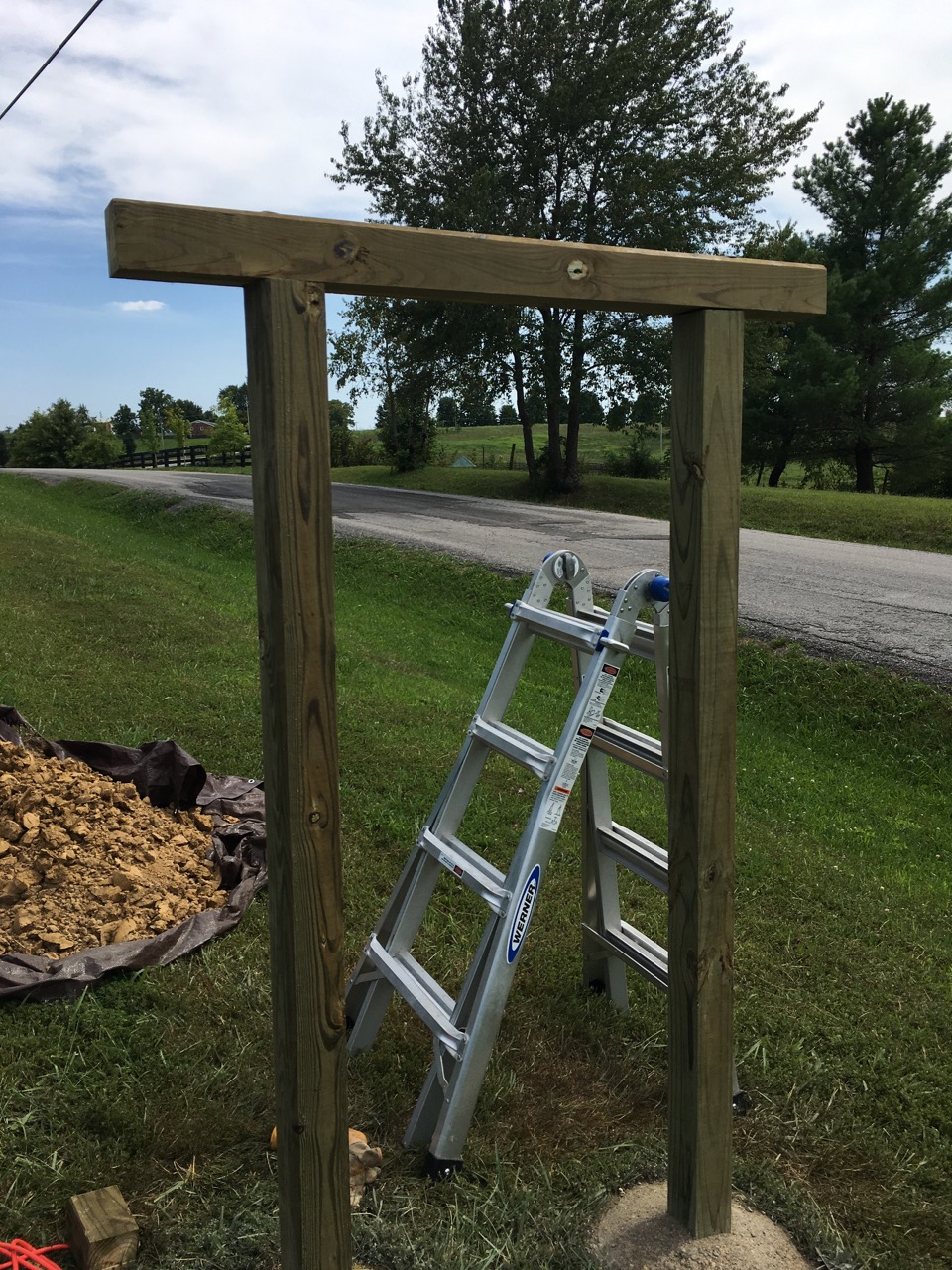
We know we live on a farm, but it’s not necessarily obvious to others…and sometimes visitors looking for us have trouble finding the farm. What to do? Put up a farm sign, of course.
Once we decided on the type of sign and size we wanted, we placed our order and started planning how we’d erect it. We get very strong winds out here, so a sturdy signpost was key. Our county requires that signs be permitted, so we created our plan, including dimensions, and took it down to the county office for approval. The process was pretty painless, the county employee was helpful, and once we paid our permit fee, we had the green light to proceed with this project.
Our sign arrived quickly, so we purchased the needed timbers, gravel, cement, and fasteners from the local home improvement store, and with the posthole digger we borrowed from our generous neighbor (thanks, SF!), we were ready to get started.
The holes needed to be about 30″ deep to allow for 6″ of gravel for drainage at the bottom. While it wasn’t the hottest day of the summer, it was sunny and hot, and there was no shade where we were installing the sign. Digging the holes was a slow, laborious process, and just when we thought we’d dug the hole deep enough, the measuring tape proved us wrong, and we had to dig some more. We finished the first hole, poured in the gravel, tamped it, set the first post on it, and then added the cement. A lot of cement. In fact, twice as much was needed as the bag’s instructions had indicated. Hmm…
Once the first post was set, we left it to dry and started in on the second hole. The second one seemed to go even more slowly, but it was finally deep enough, and we repeated the gravel, tamping, post setting, and cementing process. Did we mention that the level was used repeatedly to ensure that the posts were level and true? No wonky, leaning posts here. Once both posts were set, it was time to do the evening animal chores, so the remainder of the project was slated for the next day.

We’re skipping over the fact that several trips to the home improvement store (a 30-min drive one way) took place during the course of the project – it’s just not sexy to write about having to return items that weren’t the correct size, etc. It happened. In fact, it seems to happen with the majority of our projects. As you can imagine, we were not pleased. That’s all we need to say about it right now.
The next day was the best part: erecting the sign. We measured, cut, and fastened the top timber and then screwed in the bolts that would hold the top of the sign. We had to get creative – par for course with these projects – when we discovered that one of the long bolts that we planned to use to anchor the top timber was the wrong size; it had been mixed in with others of the correct size and wasn’t obviously discrepant. The main problem with the bolt was that the washer we were using with the bolts was too small to accommodate it. Once we drilled the hole in the washer, the bolt fit and we could continue.

Finally, everything was secured and we could step back and admire our work. Would it have gone more quickly with an auger? Of course…but when you do this kind of task by yourself, by hand, it seems like you appreciate the end result more when you break a sweat. The sign is properly permitted, installed, and professionally done. The adage “if you want something done right, do it yourself” definitely applies!
